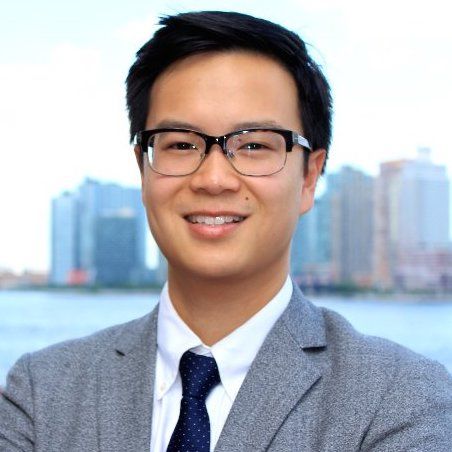Article
Edmund Tsui, MD: Making the Most of the ARVO 2021 Agenda
The UCLA expert discusses the lengthy virtual agenda of this year's meeting, as well as his own session recommendations and key discussions.
Edmund Tsui, MD

In making the most of bad situation brought on by the COVID-19 pandemic, the Association for Research in Vision and Ophthalmology (ARVO) 2021 Virtual Sessions have provided ophthalmology specialists with an entire week’s agenda of groundbreaking and touchpoint discussion on nearly every iteration of research, trends, and care strategies in the field—all from the confines of its website.
In this, the second consecutive year in which the annual global meeting has faced challenges due to the pandemic, ARVO 2021 has adopted ownership of curriculum that even addresses COVID-19 and its effect on ophthalmology.
But much more highlights this year’s virtual sessions. To provide some more insight into the meeting, HCPLive spoke with Edmund Tsui, MD, a uveitis specialist at UCLA.
Among the topics Tsui discussed were ARVO 2021’s diverse agenda, its virtual platform, comorbid collaborations, and his own session recommendations for attendees.
HCPLive: An interesting facet of this year’s ARVO virtual sessions is the extended agenda duration (7 days) featuring a very diverse series of topics in ophthalmology and retina care. What key topics stand out most you on the agenda, and why?
Tsui: Key topics that stand out to me during this virtual meeting are highly anticipated award lectures some of which include:
- Proctor Award Lecture by Dr. Peter Campochiaro on “Retinal/Choroidal Vascular Diseases: Past, Present, and Future”
- “Friedenwald Award and Lecture” Changing The Global Paradigm for Evaluation, Management and Treatment of Diabetic Eye Disease” by Dr. Lloyd Paul Aiello
Other great sessions that are spread out during the week are the live, interactive Special Interest Group (SIG), one that I was looking forward to is the discussion on imaging standards, “Lost in translation: why we need image standards in ophthalmology and how we can get there” panel session moderated by Drs. Aaron Lee and Pearse Keane. With rapid pace that ophthalmic imaging is being developed and the many platforms that are available, imaging standards are needed so that datasets, imaging algorithms, etc., can be more be more streamlined, efficient, and standardized for comparison.
But in general, since all the material is available online and/or recorded, it’s been easy to catch up on multiple talks happening at the same time and follow-up even after the session has finished. Other key topics that I am looking forward to, of course, as a uveitis specialist, are the uveitis imaging sessions and studies on upcoming therapeutics and clinical trials.
As you mentioned, this is among 3 meetings being hosted by ARVO in the month of May alone, including the Bench to Bedside meeting and the Imaging in the Eye conference. Could you speak to how critical it is for ophthalmologists to continue education on comprehensive care and research?
Tsui: It’s great that ARVO is hosting 3 meetings during the month of May and I’m looking forward to the live sessions and discussion in all these meetings. In particular, it will be my first time attending and presenting at the Imaging in The Eye Conference, so I’m looking forward to learning about the cutting edge research and new imaging applications from researchers around the world. I’ll be presenting on a study titled, “Hyper-parallel optical coherence tomography imaging of herpes zoster stromal keratitis”.
Something else prevalent throughout the ARVO 21 agenda: matters of interpreting cardiovascular and cardiometabolic care and how it influences retina disease patients. Data show a significant correlation between cardiovascular health and ocular diseases including glaucoma, cataract, AMD, and DR.
How important is the improved collaboration between ophthalmology and cardiovascular medicine in comorbidity-risk patients?
Tsui: Collaboration between ophthalmologists and other specialists is critical and helps drive our respective fields forward. We are able to learn from one another and apply our research and clinical skills to diagnose, monitor and treat diseases together. With the numerous non-invasive imaging modalities currently available and in development to image the retina and the retinal microvasculature, more and more research is being presented and published on earlier detection of systemic disease, which hopefully leads to improved overall health.
As with every present-day medical conference, the ARVO agenda thoroughly addresses the influence of COVID-19 in multiple aspects: the virus’ effect on patients’ vision and eyes, as well as the pandemic’s influence on virtual care and telemedicine. How do you perceive ophthalmology will be permanently changed by COVID-19?
Tsui: During the COVID-19 pandemic, many meetings have changed to online formats and as we return to in-person events some are testing out hybrid formats. I think virtual meetings have provided additional benefits of flexibility and being to attend meetings that we would otherwise have had scheduling conflicts or being unable to travel to.
Virtual events with both pre-recorded and live content have continued to bring about high-quality interactions between clinicians and scientists, so I am very excited that the ARVO meetings have been able to excellently adapt the 2021 meeting to this format.





